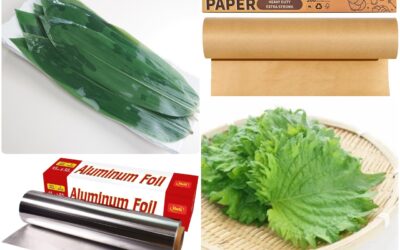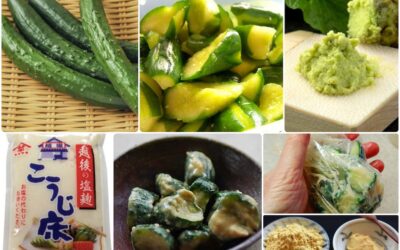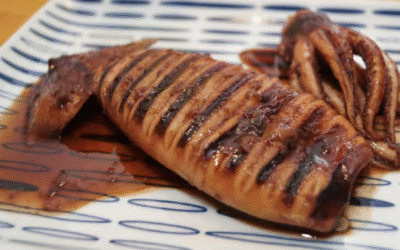
Kitchen Culture Cooking Club
EXPLORE and PRACTICE Japanese cooking in your own kitchenAbout Kitchen Culture Cooking Club
Welcome to the Kitchen Culture Cooking Club, a community space providing encouragement to those who want to EXPLORE and PRACTICE Japan’s washoku wisdom in their own kitchens.
To facilitate this, themed projects will be posted to this page periodically. Project Assignments and links to relevant reference material stored on this site will be posted to this page. Anyone, anywhere in the world, with a sincere interest in Japanese food culture is welcome to browse the contents of this page and then replicate the themed project in their own kitchen.
For those who wish to display-and-discuss their projects with like-minded people, I invite you to join the KITCHEN CULTURE Cooking Club Facebook Group (formerly the TSUDOI Project), an interactive community space.
PROJECT Symbolic Pine
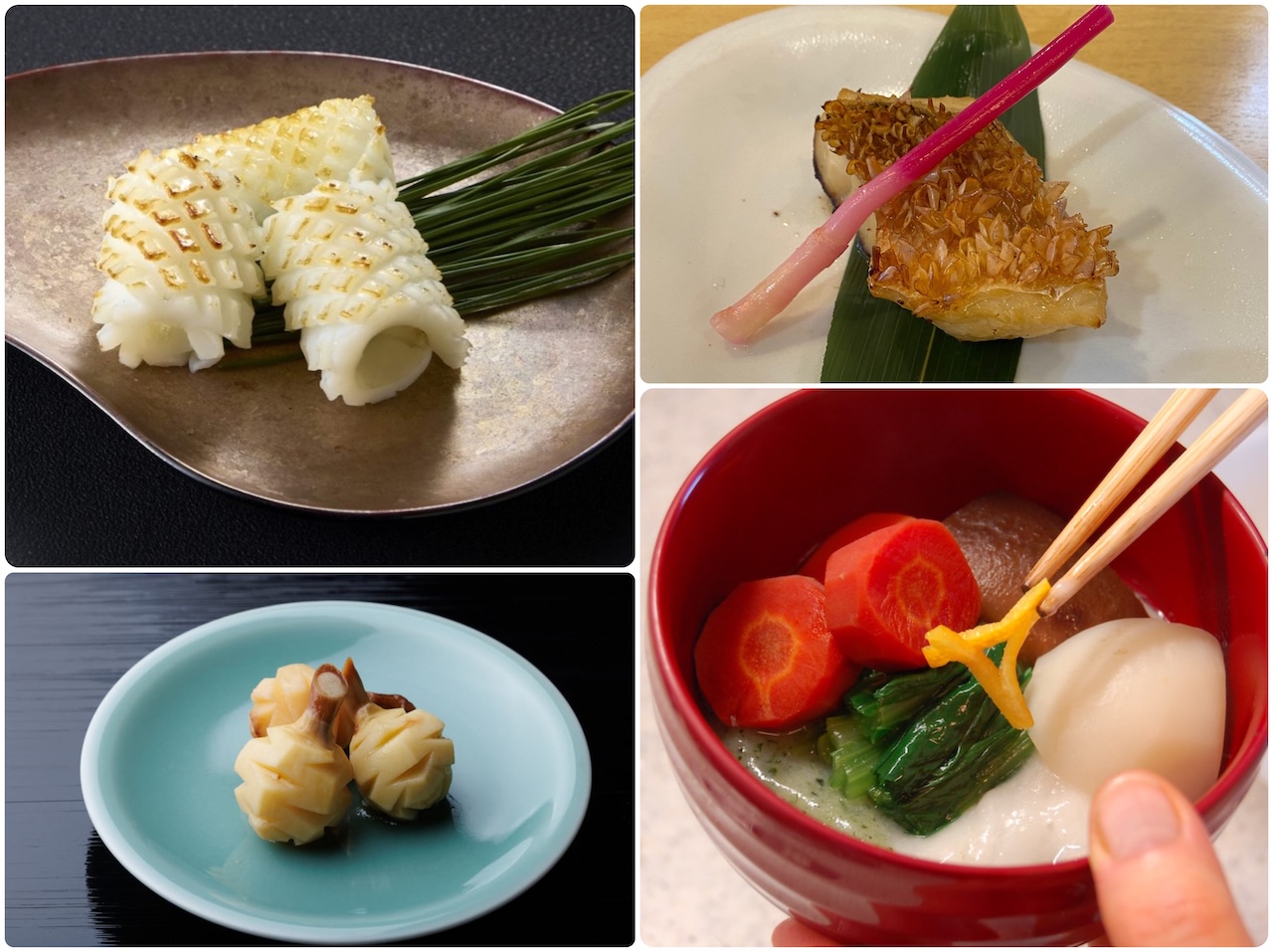
Pine as a symbol of longevity and resilience
Because pine trees are hardy evergreens, they are a symbol of longevity and resilience in Japanese culture. As such they are a key motif used at New Year’s. Various foods are configured to resemble pine. Cones (matsukasa) and needles (matsuba) are the most frequently used motifs.
Clockwise from upper right: matsukasa squid (Skinless squid is scored, brushed with soy sauce and briefly scorched to look like a pine cone); matsukasa snapper (Hot oil is poured over filleted fish with the scales intact. The scales shrivel to a crunchy finish mimicking the appearance of a pinecone); matsukasa kuwai water chestnuts are carved to resemble pine cones before being simmered in soy-and-mirin tinged dashi; matsuba, yuzu peel is cut to suggest a bent pine needle and used as a garnish for ozōni soup.
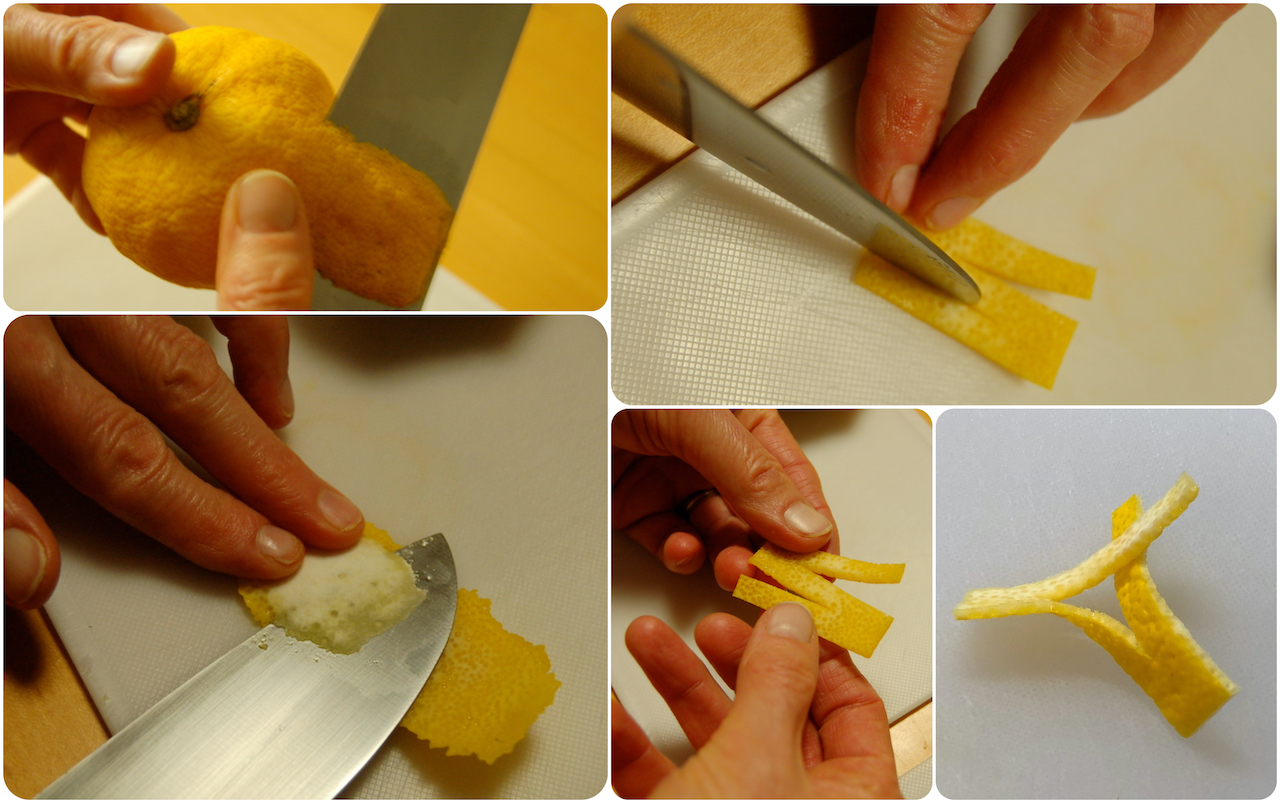
Yuzu Peel Pine Needles
Matsuba 松葉
Cut yuzu (or another citrus fruit) peel into stylized pine needles (matsuba). For each garnish, remove a broad strip of peel, about 1-inch (2.5 cm) long. Remove any pith and trim to make a rectangle.
Insert 2 slits, parallel to each other but starting from opposite ends. Depending upon how you view this, it will look like the letter N or the letter Z. Take the two open ends of the peel and twist, hooking them in place.
This garnish adds an aromatic seasonal touch to New Year’s soup called ozōni.
関西風お雑煮
Kansai-fū Ozōni
Classic Kansai Ozōni
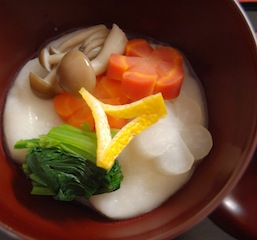
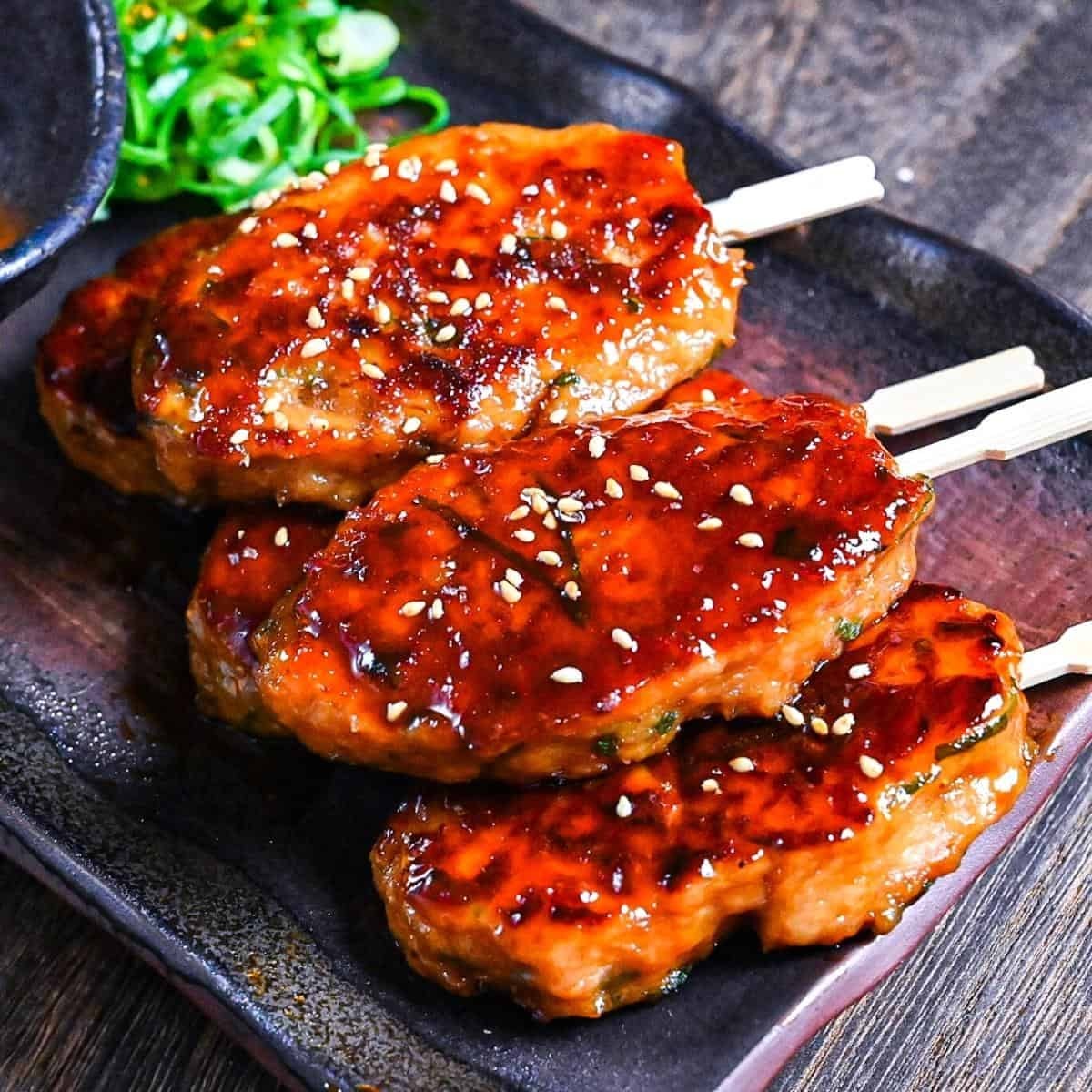
Matsukasa Ni 鶏の松笠煮
Pinecone Patties (Soy-Glazed Minced Chicken)
Addictively delicious, these chicken patties are seasoned with miso, ginger, scallions and/or grated garlic to eliminate any possible gaminess. The meat mixture is shaped into oval patties and lightly scored to mimic the appearance of pinecones.
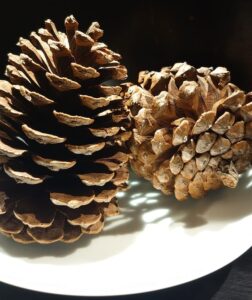
Download a copy of my December 2025 newsletter about Symbolic Pine.
To learn more about symbolism evoking pine, visit the Symbolic Pine Kitchen Culture page.
Recipes and Resources
Stock (Dashi)
Dashi stock is essential to making soups and simmered or stewed dishes. Dashi is also used when making many egg dishes and all sorts of sauces, dips and dressings. Using good dashi will make a noticeable difference in the outcome of so many dishes you prepare.
Click to download recipes for (vegan) Kelp Alone Stock or Standard Sea Stock + Smoky Sea Stock
How to Cook Rice
In Japanese, the word for cooked rice, ご飯 GOHAN, is the same as the word for a meal, ご飯 GOHAN. Indeed rice is central to the meal. Download the Rice with Mixed Grains recipe.
How to Prepare Sushi Rice
Sushi dishes are made with rice that has been seasoned (with sweetened vinegar) AFTER being cooked. Download the Classic Sushi Rice recipe.
Quick Pickles
The Japanese enjoy a wide variety of tsukémono pickles, many can be assembled quickly and are ready to eat within a short time.
Download a recipe for Quick-Fix Hakusai Cabbage.
PROJECT Katsura Muki
This PROJECT is about learning to make katsura muki, a classic cutting technique in the traditional Japanese kitchen. When done properly, long, flowing, continuous and incredibly thin peels are produced from vegetables such as daikon radish, cucumbers and carrots. In...
PROJECT Tsutsumu
Wrapped foods are varied. Sometimes parchment or foil is used to enclose foods before they are cooked. Other times the wrappers are edible making pop-in-your-mouth savory packets. Below, two examples for you to try in your kitchen. Enjoy!包み蒸し Archaeological evidence...
PROJECT Crunchy, Spicy Cucumbers
The catergory of foods known as tsukémono runs the gamut from sokuseki ("impatient") and asazuké (lightly pickled) to furuzuké (literally "old" or overly pickled) foods that are intensely-flavored and/or deeply fermented. There are dozens of kinds of cucumber...
PROJECT: Ika Yaki
Gingery griddle-seared squid, IKA YAKI イカ焼き is a favorite summer festival food sold thoughout Japan at yatai food stalls. Visit the Summer Festival Food: YATAI post for more information about summer festivals and the food sold at yatai stalls. This Kitchen PROJECT is...


